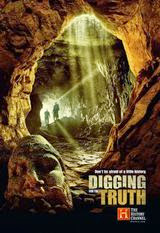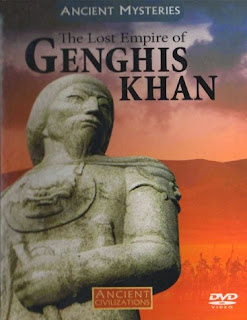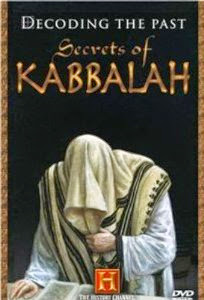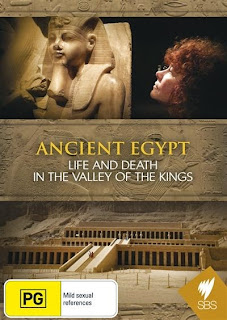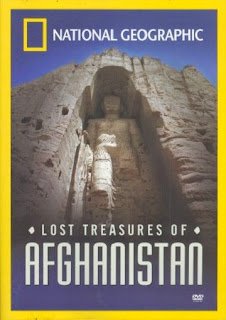- Two-part special brings to life Ancient Greece, the birthplace of Western Civilization.
- Discover the history and culture of ancient societies through their engineering accomplishments.
- Hosted by actor and art historian Peter Weller.
History and Mystery Documentaries
Watch free online history and mystery documentary, films and movies.
Engineering An Empire: Greece - Age of Alexander
Visit the glory days of the classical era - the very foundation of modern society as we know it - in this uniquely insightful and exhaustive examination of the technology of Ancient Greece.
Ancient Egypt's Golden Empire: The Warrior Pharaohs
Over 3,500 years ago, Rome was no more than a soggy marsh and the Acropolis was just an empty rock, but Egypt was on the brink of its greatest age - the New Kingdom.
There was an explosion of creativity, wealth and power in Egypt that would make it the envy of the world. After defeating the Hyksos invaders, successive Pharaohs expanded and maintained their Empire through both force and diplomacy.
There was an explosion of creativity, wealth and power in Egypt that would make it the envy of the world. After defeating the Hyksos invaders, successive Pharaohs expanded and maintained their Empire through both force and diplomacy.
Digging for the Truth: Stonehenge Secrets Revealed
Stonehenge is one of the most famous prehistoric monuments on earth. But, who built it, how did they build it and why?
As Josh Bernstein investigates, he'll discover the truth behind the stories of druids, cults and human sacrifice. He will take to the air to get a rare birds-eye view of the massive structure; scale down ancient mine shafts; test the tools that would have moved the giant stones, and meet a man whose journey from a foreign land changed the Stonehenge world forever.
As Josh Bernstein investigates, he'll discover the truth behind the stories of druids, cults and human sacrifice. He will take to the air to get a rare birds-eye view of the massive structure; scale down ancient mine shafts; test the tools that would have moved the giant stones, and meet a man whose journey from a foreign land changed the Stonehenge world forever.
Digging for the Truth: Lost Empire of Genghis Khan
Genghis Khan and his Mongol Horde created the largest land empire in recorded history, and they did it in less than seventy years. How were Genghis Khan and his army able to achieve this military dominance on such a grand scale? What ultimately became of the great Empire of the Khans?
Join host Josh Bernstein as he builds a ger on the Mongolian steppe, fires arrows from horseback like a Mongolian warrior, and uses DNA science to trace the genetic legacy of the military genius, Genghis Khan and mystery of the empire.
Join host Josh Bernstein as he builds a ger on the Mongolian steppe, fires arrows from horseback like a Mongolian warrior, and uses DNA science to trace the genetic legacy of the military genius, Genghis Khan and mystery of the empire.
Decoding the Past: Secret of Kabbalah
Kabbalah also Romanised Cabala, Qabbālâ, etc.; different transliterations now tend to denote alternative traditions, is an esoteric method, discipline and school of thought. A traditional Kabbalist in Judaism is called a Mekuba.
Kabbalah's definition varies according to the tradition and aims of those following it, from its religious origin as an integral part of Judaism, to its later Christian, New Age, or Occultist syncretic adaptations. Kabbalah is a set of esoteric teachings meant to explain the relationship between an unchanging, eternal and mysterious Ein Sof (no end) and the mortal and finite universe (his creation). While it is heavily used by some denominations, it is not a religious denomination in itself. Inside Judaism, it forms the foundations of mystical religious interpretation. Outside Judaism, its scriptures are read outside the traditional canons of organised religion.
Kabbalah's definition varies according to the tradition and aims of those following it, from its religious origin as an integral part of Judaism, to its later Christian, New Age, or Occultist syncretic adaptations. Kabbalah is a set of esoteric teachings meant to explain the relationship between an unchanging, eternal and mysterious Ein Sof (no end) and the mortal and finite universe (his creation). While it is heavily used by some denominations, it is not a religious denomination in itself. Inside Judaism, it forms the foundations of mystical religious interpretation. Outside Judaism, its scriptures are read outside the traditional canons of organised religion.
The Lost City: Finding Atlantis
Could the fabled lost city of Atlantis have been located? Using satellite photography, ground-penetrating radar and underwater technology, experts are now surveying marshlands in Spain to look for proof of the ancient city.
If the team can match geological formations to Plato’s descriptions and date artifacts back to the time of Atlantis, we may be closer to solving one of the world’s greatest mysteries.
If the team can match geological formations to Plato’s descriptions and date artifacts back to the time of Atlantis, we may be closer to solving one of the world’s greatest mysteries.
Ancient Egyptian Weapons and Battles
Documentary about description and origins of the weapons used by the Ancient Egyptian army.
Over its long history the Egyptians employed a wide variety of ancient weapons. During the earliest periods stone and wood weapons were used, these early Egyptian weapons included slings, clubs, throwing sticks, stone maces and stone tipped spears. Horn and wooden bows were also constructed and used with stone tipped arrows.
Over its long history the Egyptians employed a wide variety of ancient weapons. During the earliest periods stone and wood weapons were used, these early Egyptian weapons included slings, clubs, throwing sticks, stone maces and stone tipped spears. Horn and wooden bows were also constructed and used with stone tipped arrows.
The Secret of The Great Pyramid of Khufu - Revealed
4500 years ago, a civilization that knew nothing of iron tools, wheels or pulleys built the Great Pyramid of Khufu. For centuries, its construction remained an unsolved mystery.
But recently, a French architect disclosed a revolutionary theory: the pyramid may have been built from the inside out. Using the most advanced scientific 3D technology, Jean Pierre Houdin tested and re-enacted the construction of Khufu's tomb. He believes that an internal spiral ramp is still there.... just waiting to be found.
But recently, a French architect disclosed a revolutionary theory: the pyramid may have been built from the inside out. Using the most advanced scientific 3D technology, Jean Pierre Houdin tested and re-enacted the construction of Khufu's tomb. He believes that an internal spiral ramp is still there.... just waiting to be found.
Ancient Egypt: Life and Death in the Valley of the Kings
Egypt captivates us like few other ancient civilizations -- but what was it like to actually live there as an ordinary person 3,500 years ago? Egyptologist Dr Joann Fletcher goes on a fascinating journey in search of people like us, not the great Pharaohs but the ordinary people who built and populated this incredible ancient civilization, creating a remarkable way of life and an extraordinary way of death.
Ancient Refuge in the Holy Land
This documentary caused controversy among Christian and Jew and Muslim alike: religious believer or staunch atheist. Everything is at stake. The answers are buried in that cave.
Almost 2,000 years ago a cave near the Dead Sea became a hideout for Jews fleeing Roman persecution. Jesus had died a few years earlier (so they say), and the Jewish world was coming crashing down under the mighty Roman heal. In the 1960′s, archaeologists found letters actually written by hand by Bar-Kokhba: a Jewish rebel and one of the most famous defenders of the Jewish resistance. Could there be more treasures in the cave? That is the premise.
Almost 2,000 years ago a cave near the Dead Sea became a hideout for Jews fleeing Roman persecution. Jesus had died a few years earlier (so they say), and the Jewish world was coming crashing down under the mighty Roman heal. In the 1960′s, archaeologists found letters actually written by hand by Bar-Kokhba: a Jewish rebel and one of the most famous defenders of the Jewish resistance. Could there be more treasures in the cave? That is the premise.
Planet of the Apemen: Battle for Earth
This documentary follows the journeys of two different groups of modern humans as they encounter other human species. The first group encounters Homo erectus and is forced to cross the Thar Desert to reach the sea. The second group encounters Neanderthals in Europe.
In the not-too-distant past, humans shared this planet with other species of hominid. This series tells how, against all the odds, Homo sapiens survived.
In the not-too-distant past, humans shared this planet with other species of hominid. This series tells how, against all the odds, Homo sapiens survived.
The Mystery of the People Frozen in Time
Pompeii is one of the most iconic monuments of the Roman world. Millions of tourists go there every year to see the remains of this ancient city destroyed by the volcano Vesuvius. What makes Pompeii so special are its remarkable relics. They're not statues but remains of people frozen in the last few seconds of their lives. Nothing like them has ever been seen anywhere else.
This documentary film show everything there is so well-preserved that we know almost every detail of what happened on those days in August, 79 AD; the earthquakes, the massive eruption, and the hale of ash, rock and pumice. We even know the stories of the people who perished. But why they're fixed in those extraordinary positions had been a mystery for centuries. Now it seems that vital clues have been overlooked.
This documentary film show everything there is so well-preserved that we know almost every detail of what happened on those days in August, 79 AD; the earthquakes, the massive eruption, and the hale of ash, rock and pumice. We even know the stories of the people who perished. But why they're fixed in those extraordinary positions had been a mystery for centuries. Now it seems that vital clues have been overlooked.
NatGeo: Lost Treasures of Afghanistan
During the last three decades, war and terrorism have devastated much of Afghanistan's rich cultural past. Two giant Buddha statues were blown up by the Taliban, gold and priceless archaeological artifacts disappeared, artworks were destroyed, historic films were burned.
But many courageous Afghan people were determined to save their heritage. Join National Geographic as it highlights the efforts of heroic Afghans who have refused to allow their culture to be destroyed.
But many courageous Afghan people were determined to save their heritage. Join National Geographic as it highlights the efforts of heroic Afghans who have refused to allow their culture to be destroyed.
The Lost Empire: Byzantium
For over 1,000 years, the Byzantine Empire was the eye of the world -- the origin of great literature, fine art and modern government. Heir to Greece and Rome, the Byzantine Empire was also the first Christian empire.
After a year of filming on three continents, TLC unlocks this ancient civilization, spanning 11 centuries and three continents. Pass through the gates of Constantinople, explore the magnificent mosque of Hagia Sophia and see the looted treasures of the empire is now in San Marco, Venice.
After a year of filming on three continents, TLC unlocks this ancient civilization, spanning 11 centuries and three continents. Pass through the gates of Constantinople, explore the magnificent mosque of Hagia Sophia and see the looted treasures of the empire is now in San Marco, Venice.
Kublai Khan’s Lost Fleet
Kublai's seizure of power in 1260 pushed the Mongol Empire into a new direction. Despite his controversial election, which accelerated the disunity of the Mongols, Kublai's willingness to formalize the Mongol realm's symbiotic relation with China brought the Mongol Empire to international attention. Kublai and his predecessors' conquests were largely responsible for re-creating a unified, militarily powerful China. The Mongol rule of Tibet, Xinjiang, and Mongolia proper from a capital at modern Beijing were the precedents for the Qing Dynasty's Inner Asian Empire.
In 1274 AD storms had wrecked a Mongol invasion fleet trying to attack Japan, killing more than 20,000 troops. In 1281 the Mongol emperor tried again with a vast fleet of 4400 ships and maybe more than 100,000 Chinese and Mongol soldiers. These numbers are based on contemporary sources and have not been confirmed. During the invasion attempt, Japanese naval attacks and a another subsequent typhoon sank most of the ships off the Japanese coast, killing most of the soldiers.
In 1274 AD storms had wrecked a Mongol invasion fleet trying to attack Japan, killing more than 20,000 troops. In 1281 the Mongol emperor tried again with a vast fleet of 4400 ships and maybe more than 100,000 Chinese and Mongol soldiers. These numbers are based on contemporary sources and have not been confirmed. During the invasion attempt, Japanese naval attacks and a another subsequent typhoon sank most of the ships off the Japanese coast, killing most of the soldiers.
Subscribe to:
Posts (Atom)


